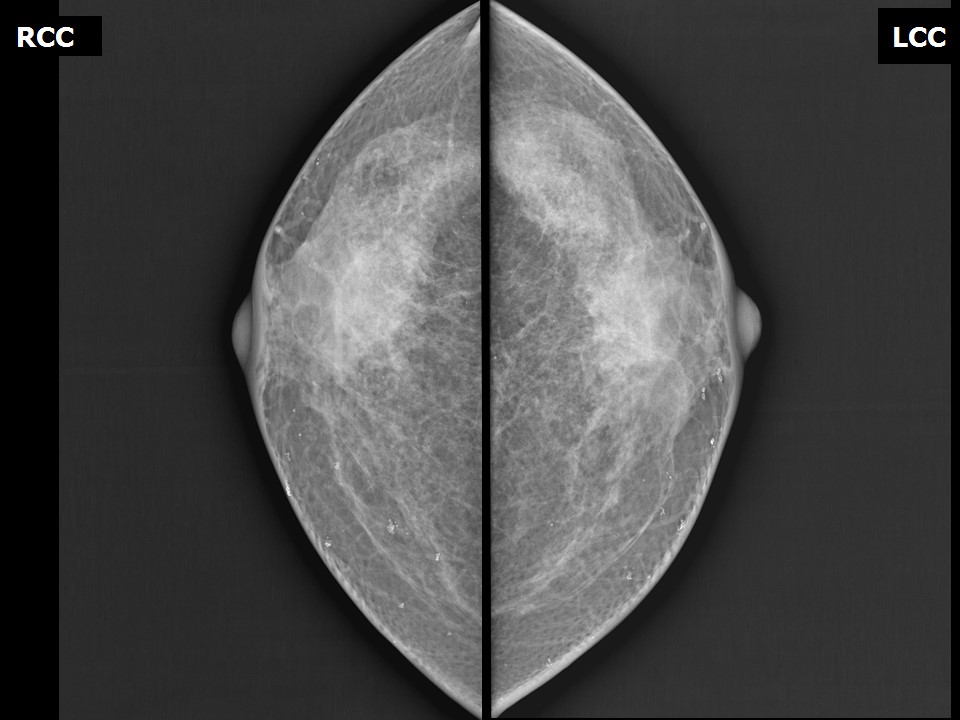Home / Training / Manuals / Atlas of breast cancer early detection / Cases
Atlas of breast cancer early detection
Filter by language: English / Русский
Go back to the list of case studies
.png) Click on the pictures to magnify and display the legends
Click on the pictures to magnify and display the legends
| Case number: | 169 |
| Age: | 48 |
| Clinical presentation: | Perimenopausal woman with average risk of developing breast cancer presented to breast clinic with bilateral mastalgia. Clinical examination did not reveal any abnormality. |
Mammography:
| Breast composition: | ACR category c (the breasts are heterogeneously dense, which may obscure small masses) | Mammography features: |
| ‣ Location of the lesion: | None |
| ‣ Mass: | |
| • Number: | 0 |
| • Size: | No mass |
| • Shape: | None |
| • Margins: | None |
| • Density: | None |
| ‣ Calcifications: | |
| • Typically benign: | Yes, with lucent centres indicating skin calcifications |
| • Suspicious: | None |
| • Distribution: | Diffuse in all quadrants and axillary region |
| ‣ Architectural distortion: | None |
| ‣ Asymmetry: | None |
| ‣ Intramammary node: | None |
| ‣ Skin lesion: | None |
| ‣ Solitary dilated duct: | None |
| ‣ Associated features: | None |
BI-RADS:
BI-RADS Category: 2 (benign)Case summary:
| Perimenopausal woman presented with bilateral mastalgia. Diagnosed as bilateral breast, typically benign skin calcifications, BI-RADS 2 on imaging. |
Learning points:
|






